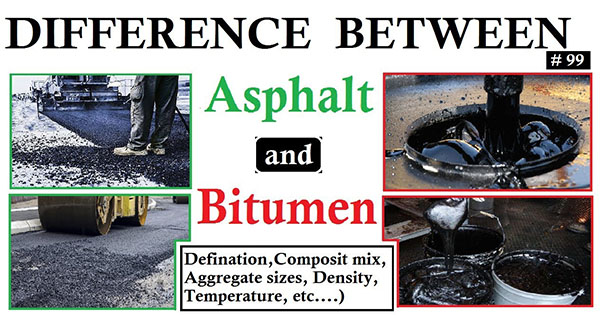Variations among bitumen and asphalt

In this construction video tutorial you will get detail information on the variations among bitumen and asphalt. Besides, you will also gather knowledge on the density, mixing plant temperature, sizes of aggregates and lots other.
Bitumen is generally the liquid binder that retains asphalt collectively. A bitumen-sealed road contains a layer of bitumen sprinkled and then wrapped through an aggregate. The process is again repeated to provide a two-coat seal. The bitumen is partly hydrogenated, polycyetic and aromatic compound.
Asphalt is developed in a plant that heats, hydrates and blends aggregate, bitumen and sand into a composite mix. It is then delivered through a paving machine on the job site like a solid material at a specified or necessary thickness, relevant to the end use. Asphalt leads to a smoother and more consistent surface as compared to a bitumen-sealed road.
In asphalt 95% is stone and sand and 5% as binder (bitumen) is used.
In asphalt temperature is maintained with 150 to 1900 C and binder (bitumen) is used.
Density of bitumen is 1040 kg/ m3 whereas density of asphalt is 2330 Kg/m3 or 145 lbs/cft.
For less flexible pavement, the size of the asphalt varies among 10 to 14 mm and in more flexible pavement, the size of the asphalt varies among 5 to 10 mm.
Bitumen comes with dark color with slight reddish tinge whereas asphalt is made of blackish brown.
Bitumen remains in solid state whereas the asphalt remains in solid or semi-solid state.
The carbon content in bitumen is medium whereas it is low in asphalt.
The adhesive strength is more powerful in bitumen whereas it is less in asphalt.
To get more relevant information, go through the following construction video tutorial.
Video Courtesy : F&U-FORYOU

